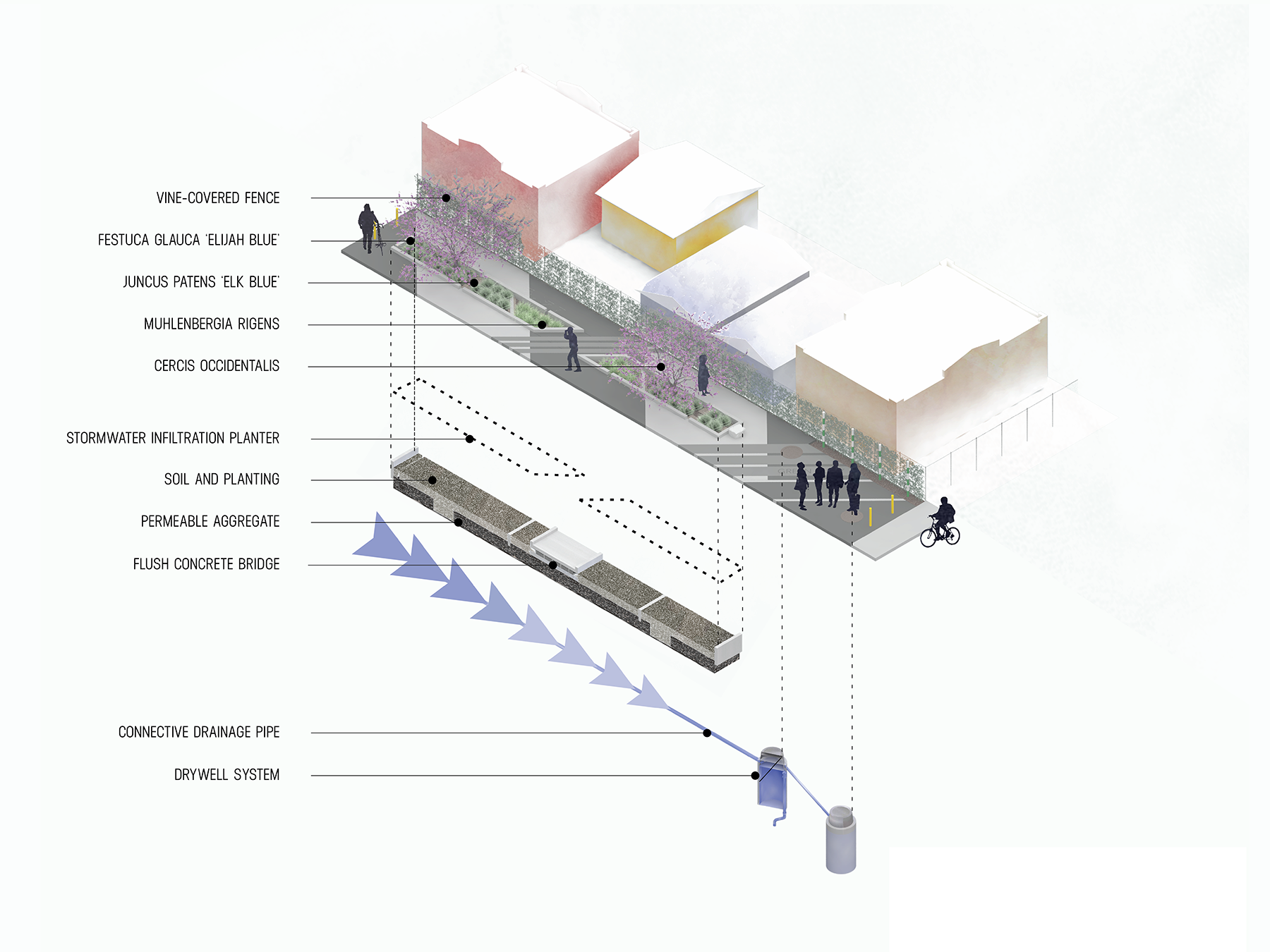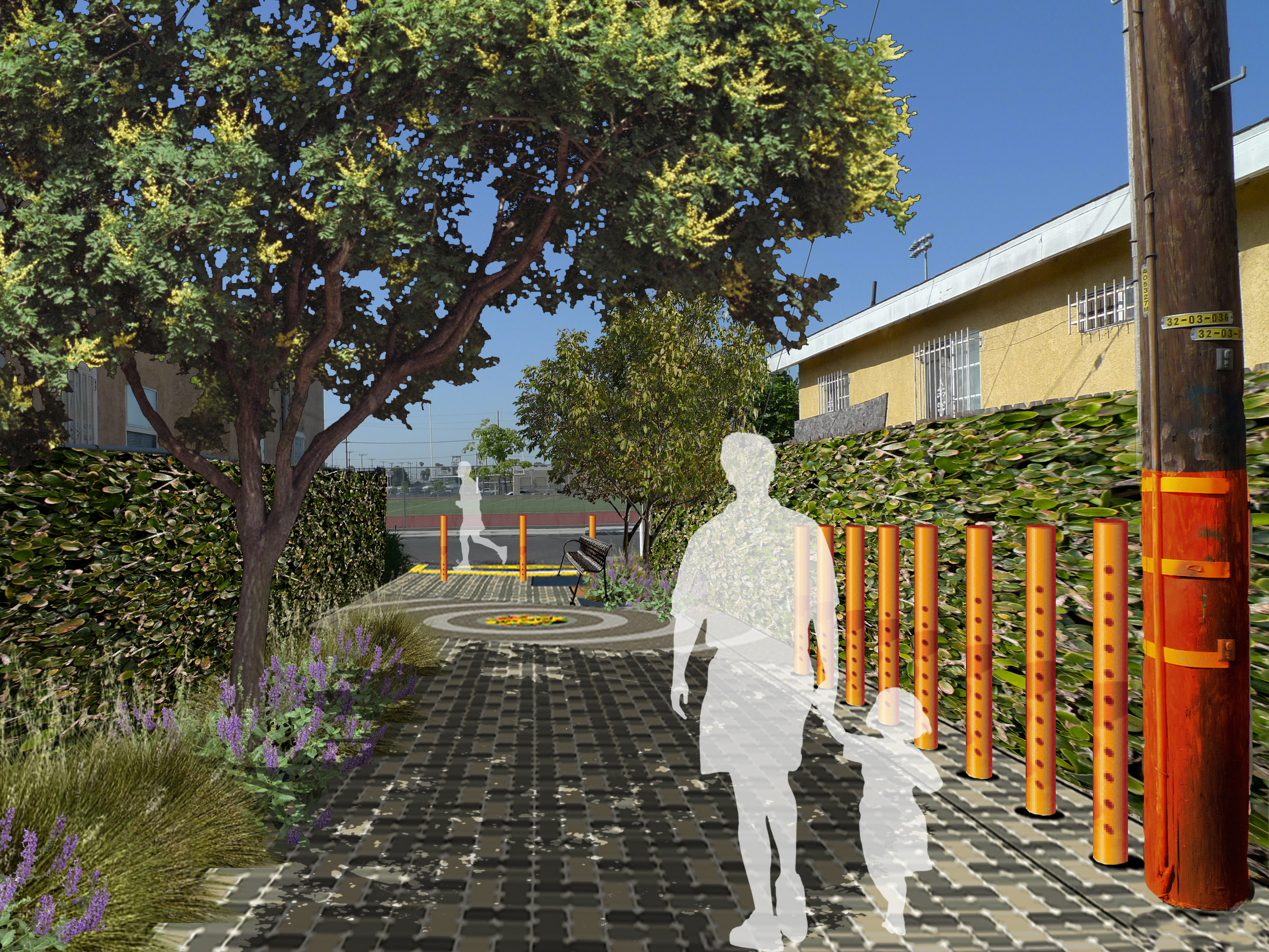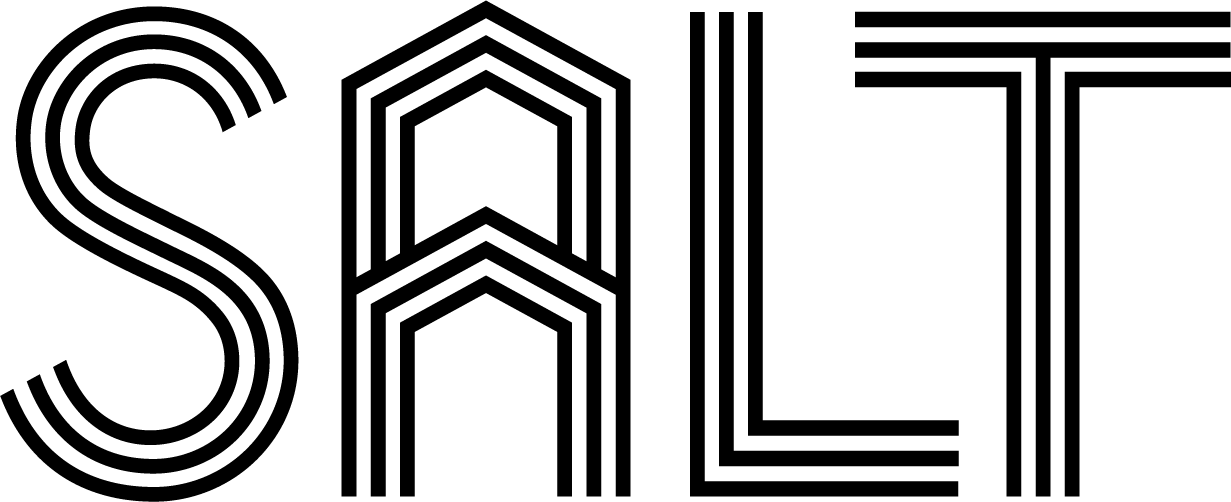GREEN ALLEYWAYS
Working with the Trust for Public Land, SALT has designed two new green-infrastructure alleyways in a south Los Angeles neighborhood.
These renovated pedestrian, bike, and vehicular passageways are projected to capture over 760,000 gallons of stormwater per year as well as provide distinctive concrete paving designs and a small pedestrian mall with a demonstration bio-swale.



“Nationally, there are 9.5 acres of open space per 1,000 residents, according to the National Recreation and Park Association. Los Angeles County has 3.3 acres of public space per 1,000 people, and South Los Angeles only about half an acre, according to a countywide report on parks.
The Trust for Public Land, which aims to get the nation’s 100 biggest citiesto commit to making a 10-minute walk to a park possible for all Americans, sees the open space in alleys as an underused resource: According to the organization, 20,000 people live within a half-mile of the green alley under construction, and the organization hopes that the networks can be used for biking, walking, playing and gardening.”
- The New York Times, 2016
There are 900 linear miles of alleys in Los Angeles, which combined would make up about 3 square miles—about half the size of Griffith Park and twice the size of New York's Central Park. Scattered throughout the city in neighborhoods, commercial zones, downtown, and L.A.'s industrial areas, the alleys, for the most part, are ignored.
So why not transform these uninviting, concrete corridors into safe, green, community spaces? The Trust for Public Land is doing just that. Partnering with the City of Los Angeles' Community Redevelopment Agency, Bureau of Sanitation, the University of Southern California's Center for Sustainable Cities, Jefferson High School and others, we're re-purposing several neighborhood alleys into vibrant, outdoor areas. Improvements include:
- Light colored paving to reduce the heat island effect;
- Cross walk striping, lights, and signage to encourage pedestrian use and increase workability;
- Native and drought tolerant planting to help green and beautify the neighborhood;
- A host of innovative techniques to capture and infiltrate storm water from nearby alleys and streets.



 Existing conditions, 2014
Existing conditions, 2014





